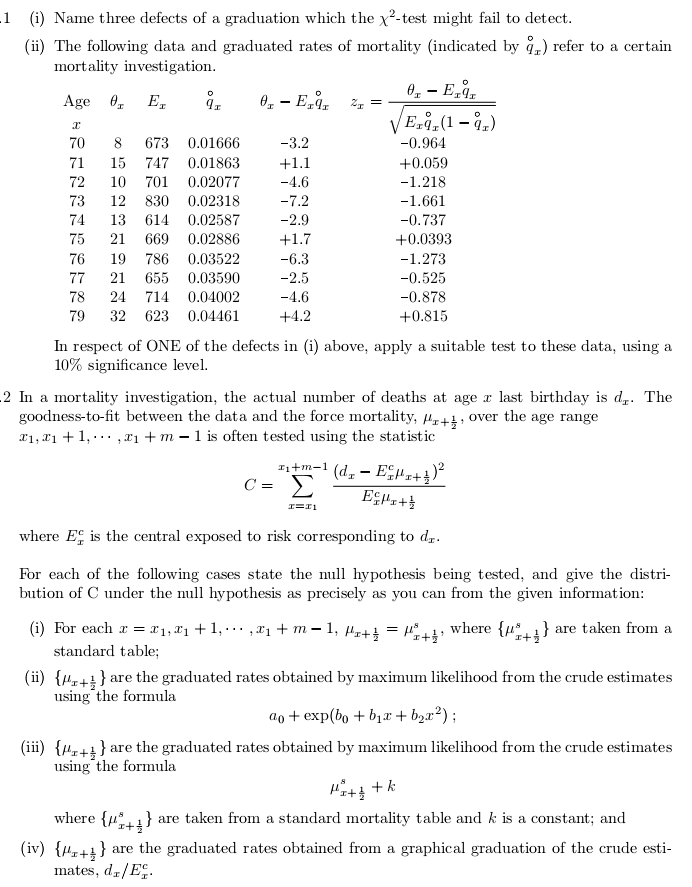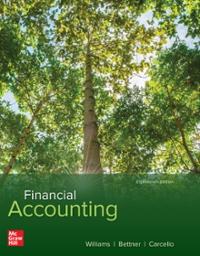

Posted this before but didn't get the correct answer.Please ensure its correct answer.
The Chevalier de Mere, a seventeenth century gambler, thought that it paid to bet evens on the event: A : you will get one or more sixes when four unbiased dice are thrown In other words, the Chevalier thought that P(A) > 1/2. (i) (a) Show that the probability of this event occurring is, in fact, 0.5177. (b) The experiment of throwing four unbiased dice is performed 10 times and results in the event A occurring 8 times. (1) Write down an equation which must be satisfied by pz, a lower 95% confidence limit for p = P(A) . (2) Verify that pz = 0.493 satisfies this equation. (3) Comment on this value of pz relative to the true value of p as specified in part (i)(a). [6] (ii) The experiment of throwing four unbiased dice is performed 1,000 times and results in the event A occurring Y times. (a) Write down a large sample expression for pz , a lower 95% confidence limit for p = P(A). (b) Determine how large Y would have to be for py to be greater than 1/2. (c) Using the true value of p as specified in part (i), calculate the probability that pz will, in fact, be greater than 1/2. [8] (iii) For the situation where the experiment is performed 10,000 times: (a) repeat part (ii)(b) (b) repeat part (ii)(c) and comment briefly on any difference between your two answers. [6] [Total 20]1 (i) Name three defects of a graduation which the x -test might fail to detect. (ii) The following data and graduated rates of mortality (indicated by q, ) refer to a certain mortality investigation. Age VErqx(1 - 92) 70 8 673 0.01666 -3.2 -0.964 71 15 747 0.01863 +1.1 +0.059 10 701 0.02077 -4.6 -1.218 73 12 830 0.02318 -7.2 -1.661 74 13 614 0.02587 -2.9 -0.737 75 21 669 0.02886 +1.7 +0.0393 76 19 786 0.03522 -6.3 -1.273 77 21 655 0.03590 -2.5 -0.525 78 24 714 0.04002 -4.6 -0.878 79 32 623 0.04461 +4.2 +0.815 In respect of ONE of the defects in (i) above, apply a suitable test to these data, using a 10% significance level. In a mortality investigation, the actual number of deaths at age a last birthday is d,. The goodness-to-fit between the data and the force mortality, A,+4, over the age range 21, mi +1, ... ,21 + m - 1 is often tested using the statistic ntm-1 (dx - EffIt;) C = > where Ef is the central exposed to risk corresponding to dr. For each of the following cases state the null hypothesis being tested, and give the distri- bution of C under the null hypothesis as precisely as you can from the given information: (i) For each . =1,atl, ..., mi+ m-1, Art; = up, where {up, } are taken from a standard table; (ii) {or+} } are the graduated rates obtained by maximum likelihood from the crude estimates using the formula do + exp(bo + bix + bax?) ; (iii) {ur+} } are the graduated rates obtained by maximum likelihood from the crude estimates using the formula Hitt th where {us } are taken from a standard mortality table and k is a constant; and (iv) {ur+; ) are the graduated rates obtained from a graphical graduation of the crude esti- mates, do/ EF.A company is analysing the number of accidents that occur each year on the factory floor. It believes that the number of accidents per year N has a geometric distribution with parameter 0.8, so that: P(N - m) - 0.8x 0.2", n - 0,1,2. .. For each accident, the number of employees injured is Y, where Y= X +1, and X is believed to have a Poisson distribution with parameter 2.2. The company has taken out an insurance policy, which provides a benefit of $1,000 to each injured employee, up to a maximum of three employees per accident, irrespective of the level of injury. There is no limit on the number of accidents that may be claimed for in a year. (i) Show that E(5) = 0.634 and var( S) =2.125, where S is the total number of employees claiming benefit in a year under this policy. [7] (ii) Hence find the mean and variance of the aggregate amount paid out under this policy in a year. [1] [Total 8]











